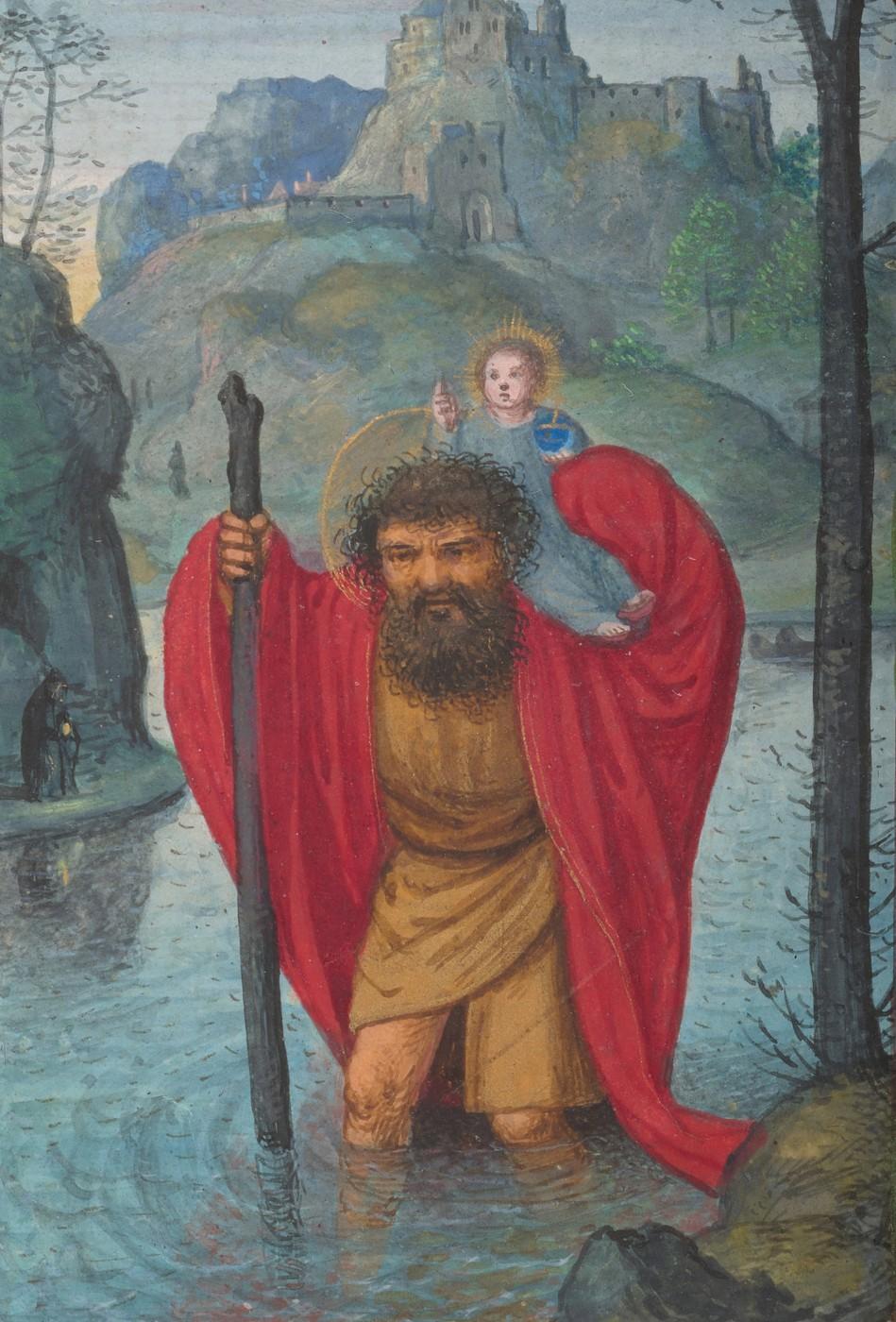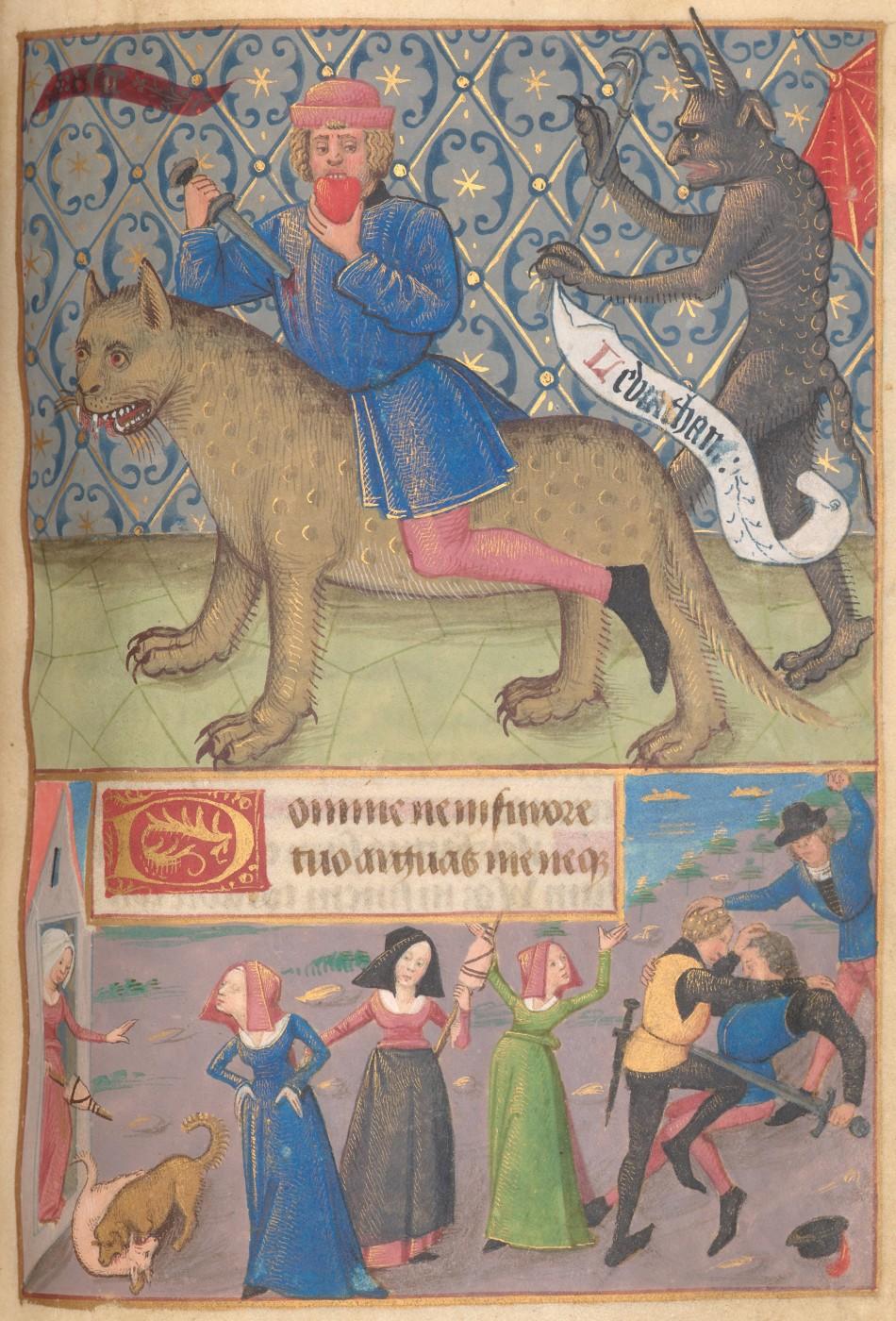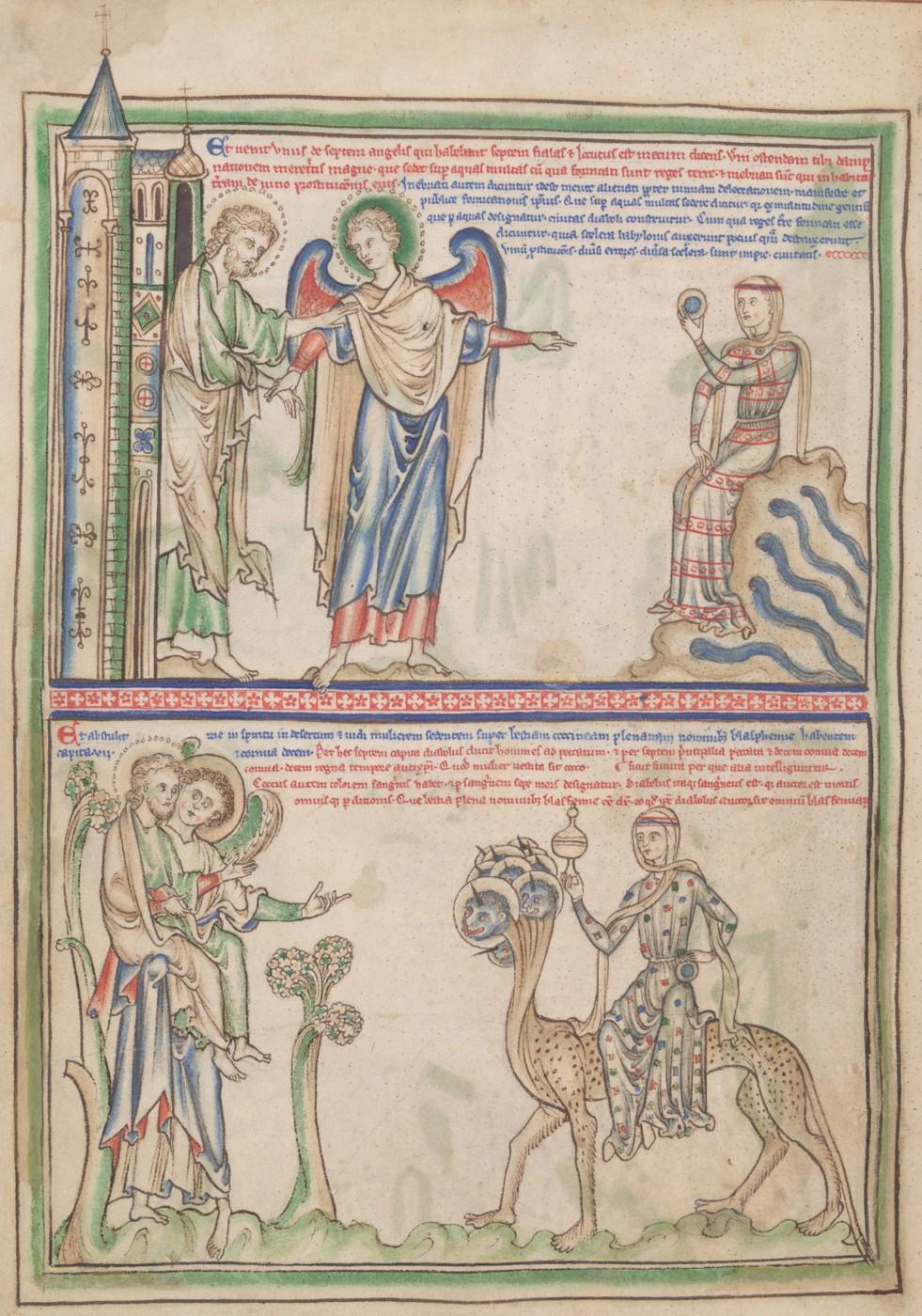A monstrous politician is heartless and without morals. Immigrants are compared to monsters to dehumanize them. Popular comics and movies glorify superhuman characters whose monstrous physique or abilities may be our salvation. Fractured fairy tales retell stories from the monster’s point of view, bringing sympathy to characters previously disenfranchised. Our current multifaceted experience of the monstrous mirrors the varied representation of the monstrous in medieval art, making Medieval Monsters: Terrors, Aliens, Wonders a very relevant exhibition exploring the complex social impact of monstrous art in the Middle Ages.

Taming the Tarasque, from Hours of Henry VIII (detail), c. 1500. Jean Poyer (France, active 1483–1503). Ink, tempera, and gold on vellum.
Monsters exert a timeless fascination, and have often been used as a metaphor for the strange, different, extraordinary and appalling. Demons and angels, dragons, mermaids and unicorns filled medieval bestiaries and continue to manifest in popular culture, while the definition of “monstrous” continues to be examined. Now the first-ever exhibition of its kind, Medieval Monsters: Terrors, Aliens, Wonders, organized by The Morgan Library & Museum, and currently on view at the Cleveland Museum of Art (CMA), is examining the place of these beasts in medieval art history.

The Annunciation as an Allegorical Unicorn Hunt, c. 1500. Germany, Eichstätt. Ink, tempera, and gold on vellum.
Combining 60 illuminated manuscripts from the Morgan’s renowned collection, along with a selection of sculpture, prints and illuminated manuscripts from the CMA’s antiquities and medieval art collection, the exhibition includes devotional, liturgical and secular works from the ninth to the 16th centuries.
The exhibition has three sections, based on the various functions of monstrous imagery in medieval societies. “Terrors” investigates how images of monsters, including the supernatural and the grotesque, was used to reinforce the power of religious leaders, saints and the ruling class, including monarchs and knights. The ruling class used dragons or griffins as sigils of power, while saints were often depicted as giants radiating a discernible light or blithely ignoring their tortured physical martyrdom because of their divine connection.
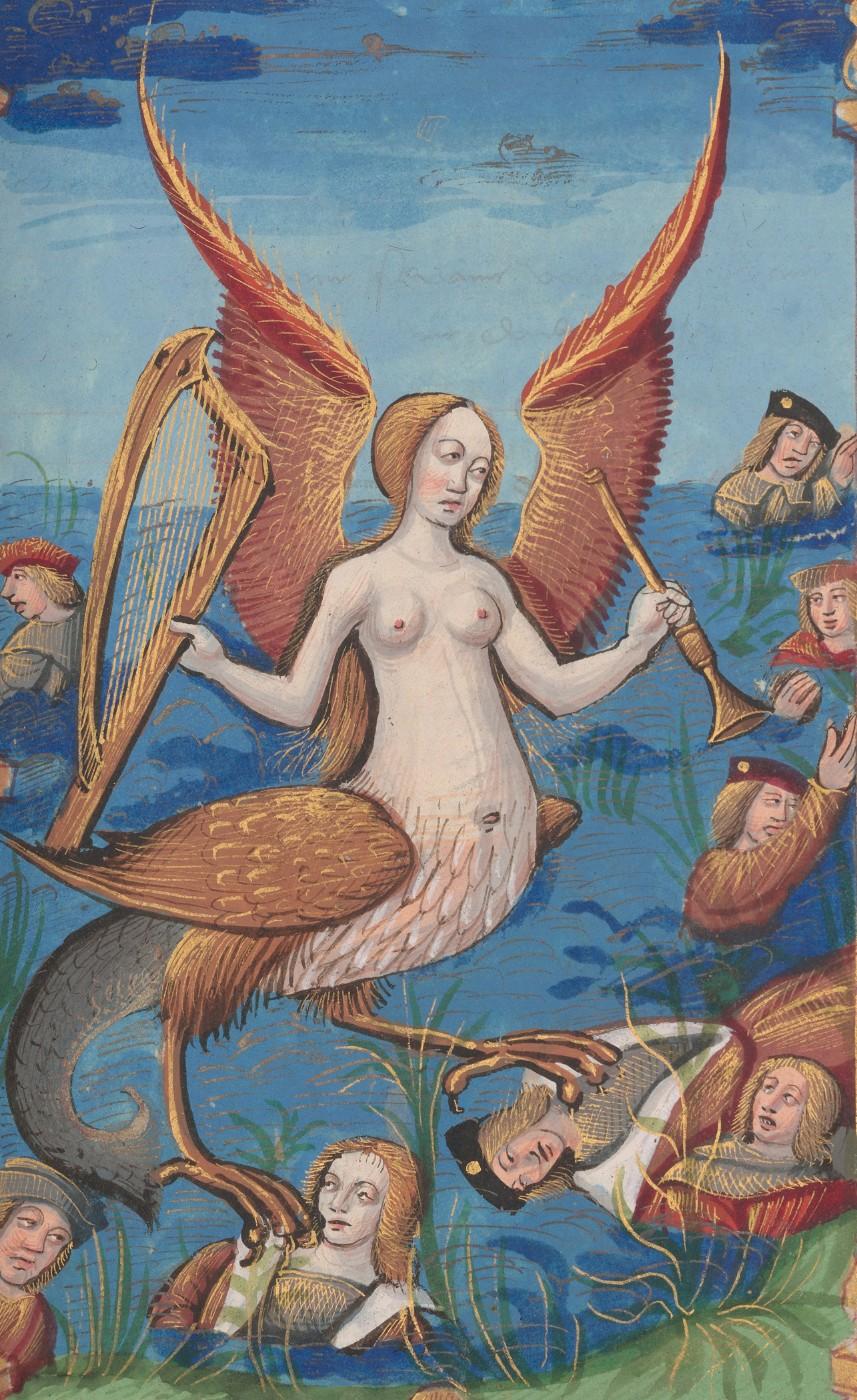
Siren, from Les Abus du Monde, c. 1510. Pierre Gringore (French, c. 1475–1538). Ink, tempera, and gold on vellum.
“Aliens” scrutinizes how monstrous imagery was used to further alienate marginalized people, including Jews, Muslims, women, the poor and the disabled. Caricatures with monstrously exaggerated features, grotesque body hair or stereotypical clothing illustrate the medieval European’s religious and class prejudices. The female form was often used to personify sin and temptation; a winged Siren luring men to a watery doom reflects the patriarchal distrust of female power and women in general. Paradoxically, women were also portrayed positively, as saints, reflecting the Madonna/whore dichotomy society still wrestles with.
“Wonders” showcases the quirky and sublime ornamentation in illuminated manuscripts, sculptural works and other art that inspires awe, wonder and humor. Funny hairy men, winged angels, and fantastical mythical beasts cavort in the borders or enthrall as the central composition. These charming monstrosities spark joy, using the supernatural and the grotesque to create an experience of amazement.
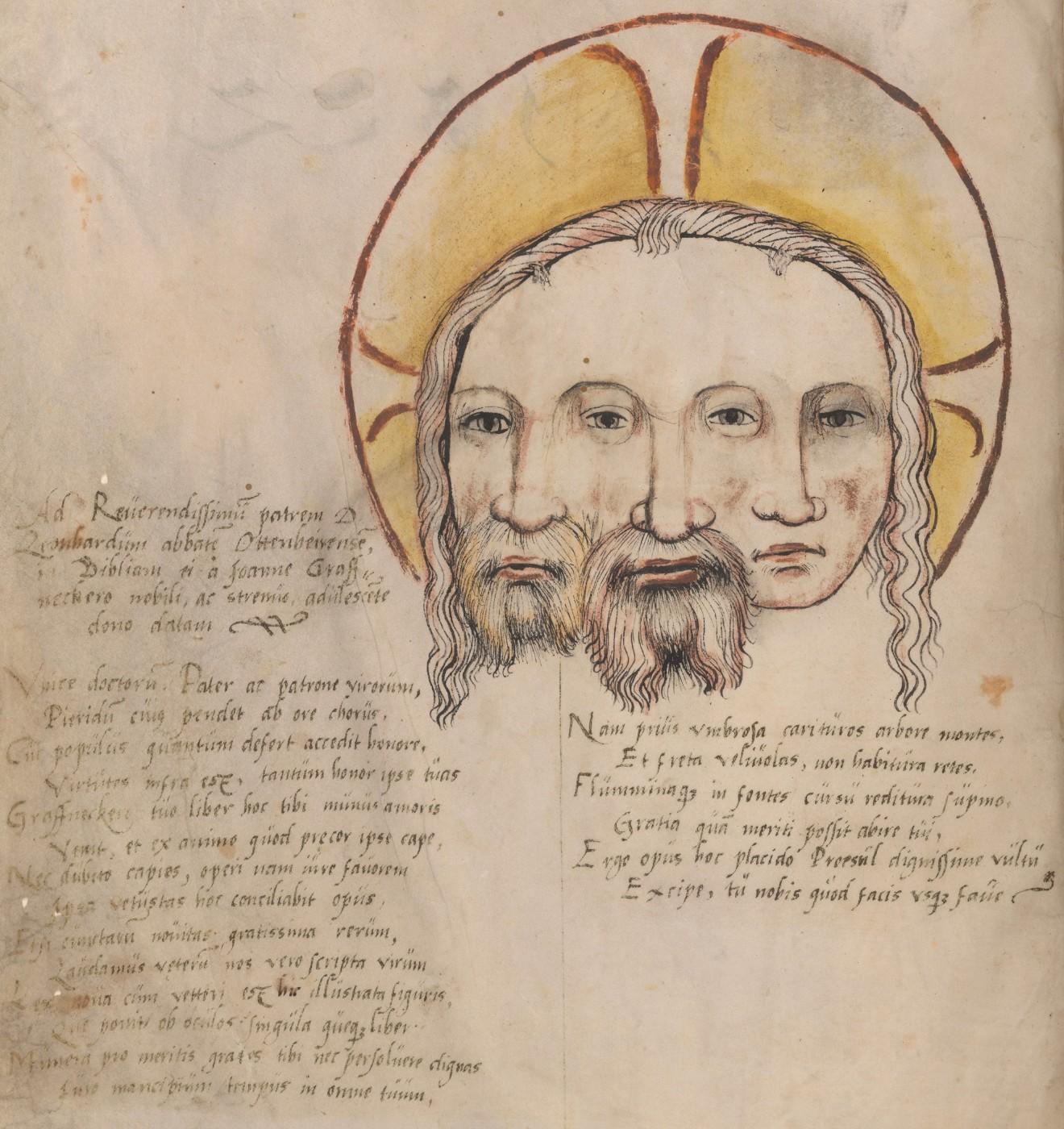
Historien Bibel (Biblical History), in Latin and German (detail), right page c.1375–1400, left page c. 1522. Germany, Swabia. Ink on vellum.
Medieval Monsters: Terrors, Aliens, Wonders is on view at the CMA through October 6, 2019.




